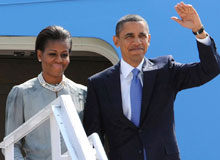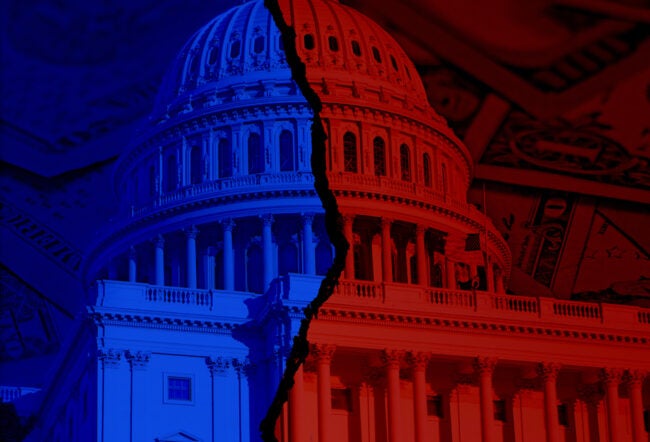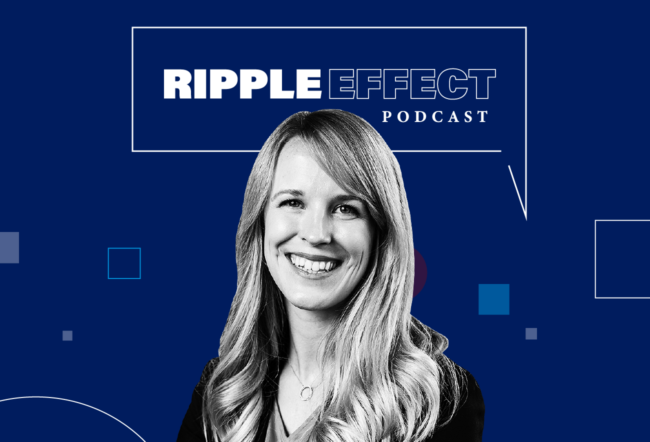U.S. President Barack Obama’s trip to India in early November — the first leg of his four-nation Asia tour — was riddled with potential political landmines. According to many, it was a meeting of two lame duck heads of state. The U.S. midterm elections in early November, widely billed as a referendum on President Barack Obama, had resulted in the worst Democratic Party defeat in 70 years. The economy had failed to bounce back. Some 150,000 jobs were added in October, but it was too little, too late to make a perceptible dent in the 9.6% unemployment rate. Obama’s approval rating, meanwhile, remained a low 45%.
In India, Congress Party Prime Minister Manmohan Singh was in a better position with the economy growing at close to 9%. Jobs are always a sensitive issue in India, but they were not making headlines in Delhi as they were in Washington. Singh’s problems were different, including lingering public relations issues stemming from charges of incompetence and corruption in the hosting of the Commonwealth Games in Delhi, and a series of personnel scandals threatening to destabilize his United Progressive Alliance (UPA) government.
Meanwhile, the extreme Left and the extreme Right were aiming to create problems during Obama’s stay. Maoists killed eight people in West Bengal, Bihar and Orissa during a 24-hour a strike called by them to protest against the visit of “imperialist” Obama.
There was also resentment among the citizens of the cities Obama was scheduled to visit. The Sunday Times in Mumbai summed it up in the headline: “Obama puts SoBo under house arrest: Cops Take Over Roads, Skies Under Lens, Crackers Banned.” (SoBo refers to South Bombay, the former name of Mumbai.) What surprised many was that Obama had chosen to come to India during one of its most important festivals — Diwali — marked by the bursting of firecrackers and other fireworks. All of that was put on hold for security concerns.
Despite these controversies, many observers agree the trip was a big success. Obama and First Lady Michelle Obama developed an immediate rapport with their hosts. The protests of the Left were contained in Eastern India, and Obama didn’t visit that region. A spokesman for the Right, Rajiv Pratap Rudy of the BJP, spoke out against Obama and was promptly disowned by his party.
“It was very encouraging and pleasing that the right messages were put out by President Obama,” says Ashvin Parekh, partner — national leader, global financial services, Ernst & Young (E&Y). “The hard and negative perceptions were cleared out to a large extent.” Adds Ajit Gulabchand, chairman and managing director of Hindustan Construction Company (HCC): “The trip was a great success.”
For Obama, of course, jobs were center stage. He was in controversial territory: He has often contended that outsourcing work to Bangalore was stealing jobs from U.S. workers. However, one of the early announcements made during his visit was that 20 deals worth US$10 billion had been signed between Indian and U.S. companies. It was emphasized that this would create 50,000 plus jobs in the U.S.
Jobs above All
In Parliament, where he addressed a joint session of the two houses, Obama reiterated the employment issue. “Together, we can create the high-tech, high-wage jobs of the future. With my visit, we are now ready to begin implementing our civil nuclear agreement. This will help meet India’s growing energy needs and create thousands of jobs in both our countries…. We can pursue joint research and development to create green jobs.”
The details given for the deals highlight the emphasis on jobs. A US$4.1 billion agreement with Boeing will result in 22,160 jobs. A US$822 million accord for light combat aircraft engines with General Electric: 2,220 jobs. A US$2.7 billion Boeing deal with SpiceJet: 12,970 jobs. A US$750 million gas turbine sale by General Electric to Reliance Power: 2,650 jobs.
The list also includes smaller deals: a US$6 million Trace Explosive Detection Equipment project (30 jobs); and a US$1 million long-range antenna system for rural telecommunications (5 jobs). “The deals are real and trackable,” says Rajan Mittal, president of apex chamber, the Federation of Indian Chambers of Commerce and Industry (FICCI). “In fact the number of jobs to be created is understated at times. For example, Boeing alone will be selling US$28 billion worth of aircraft to Air India, SpiceJet and Jet Airways. This will create 280,000 jobs in the U.S.”
Mittal is responding to skepticism about the number of jobs. Others tend to agree with him. Says Ashok Soota, executive chairman of IT company MindTree Ltd: “All increased trade does lead to increased jobs. The numbers may be real because every direct job created also has an indirect multiplier effect.” If you create a job at McDonald’s in India, it doesn’t stop there, says Gulabchand of HCC. “This results in the creation of another job at McDonald’s in the U.S. Yes, all these jobs they are talking about will be there. But it won’t happen overnight.”
Rajesh Chakrabarti, professor of finance at the Hyderabad-based Indian School of Business (ISB), agrees that the job creation process will take time. He adds another caveat: “The 50,000 odd jobs total will have limited impact on the U.S. which needs that figure every fortnight to claw back out of its troubles.”
“Job creation must be the first priority in both countries,” says a report by the United States India Business Council (USIBC), titled Partners in Prosperity: Business leading the way. “Without jobs, weak consumer confidence, protectionism, and trade barriers will impede America’s desire to lead in a truly global economy. And in India, the ideal of inclusive growth will remain elusive without jobs to fuel it.”
Singh’s Different Agenda
For Manmohan Singh, jobs are important. But he is in a very different situation from Obama. The Indian economy is booming. According to HR service provider Ma Foi Randstad, the organized sector will create one million jobs in 2010. Salary hikes are among the highest in the world. Other nationals — Americans, Chinese, and the ubiquitous Bangladeshis and Nepalese — are pouring into the country seeking employment. Singh’s prime ambition today is to get international recognition that India has arrived.
Obama provided that recognition in full measure. In his address to Parliament, he said: “I look forward to a reformed U.N. Security Council that includes India as a permanent member.” And again, “We welcome India as it prepares to take its seat on the U.N. Security Council.” Obama officials later clarified that this was no feel-good sound bite; the U.S. would actively work towards getting India to the high table.
“U.S. support of India’s permanent seat in the U.N. Security Council has wide-ranging implications,” says Chakrabarti of ISB. “India has benefited diplomatically. The U.S. support to India may also be seen as creating a regional counterweight to China in the long run.” The USIBC Partners in Prosperity report underscores this. “The U.N. Security Council remains the clearest symbol of decision-making in world security matters,” it says. “The U.S.-India business community strongly feels that our partnership should begin here. President Obama calling for a renewal of the U.N. Security Council and the inclusion of India as one of its new permanent members will galvanize both societies, laying the groundwork for deeper collaboration at every level.” Adds FICCI chief Mittal: “This political relationship will also impact the economies of both countries in a positive manner.”
Criticism Continues
Not everybody is so positive. “Obama has given India a ticket to Mars,” writes economist and commentator Swaminathan S. Anklesaria Aiyar in a column in the Sunday Times of Mumbai. “The U.S. has no power to give anybody a permanent Security Council seat…. Obama’s support is like a ticket for the first commercial flight to Mars, a favor no doubt, but one so far off in the future that most of us will be dead before it happens.”
Other critics have panned the cost of the trip — reported in the U.S. press at US$200 million a day. (The U.S. taxpayer pays.) Some saw exaggeration in the deals that were announced. “Visits of head of state are symbolic in terms of giving a signal,” says Soota of MindTree.
There were agreements at the government level that should pay rich dividends. Mittal of FICCI sums up: Indo-U.S. deals were signed in the areas of military aviation, energy cooperation and research, nuclear partnership, defense (Indian companies have been removed from the Entities List — a list of organizations to which export of sensitive technologies are restricted), nuclear non-proliferation, and infrastructure (where a US$10 billion joint debt fund has been set up). “The main thrust of the [new] relationship will come from removal of Indian organizations from the Entities List and the relaxation of export controls,” adds Mittal.
The more material outcome of the visit has so far remained low key. Business fortnightly Business India reports that “The hidden story of the Obama visit, however, is the coming of age of the U.S.-India CEO Forum.” This body, set up originally by President George Bush and Prime Minister Singh in 2005 and revived by Obama and Singh in 2009, has proposed two areas of cooperation — space and health. In space, India has ambitious plans of another moon mission and a Mars project. In health, the target is diabetes, which afflicts some 80 million people in the U.S. and India.
The importance being given to the CEO Forum is also indicative of another development in Delhi. When it comes to relations with the U.S., the top industry bodies earlier — the American Chamber of Commerce and the Indo-U.S. Chamber of Commerce — have been displaced by the USIBC. In fact, the USIBC is seen as more relevant than the regular apex chambers of commerce — the Confederation of Indian Industry (CII) and the FICCI.
On November 6, USIBC orchestrated the largest executive mission of U.S. business leaders ever to embark from America’s shores. Some 200 businessmen from the U.S. showed up in Mumbai to listen to Obama and network with their Indian counterparts. They included Jeff Immelt of GE, Indra Nooyi of PepsiCo and David Cote of Honeywell. Obama is coming to India as a salesman, not a statesman, The Washington Times had reported before the India sojourn. “This is a business trip.”
Still, Obama certainly won hearts and minds. “I felt that President Obama and the First Lady came across as warm and wonderful human beings,” says Soota of MindTree. “The fact that he spent more time in India than other destinations on the tour and that he came with such a large business delegation is itself an important signal and will lead to enhanced India-U.S. trade.” Adds Gulabchand of HCC: “It is important to note that Obama, unlike Bush or Clinton, has come here early in his term. This gives him time to build on the rapport he has struck with Singh and India.”
Both sides today realize that there is much to be gained from working with each other. “If there is acceptance of the business capabilities of India and that, because of its vibrant and emerging market, it can help create jobs back in the U.S., then that itself would be a very interesting development,” says Parekh of E&Y. “That puts us on a very different pedestal altogether. From a business perspective both these markets need each others’ support. There is so much of complementing possibilities. It can be a win-win situation.”
“We are natural partners,” says Gulabchand of HCC. Elaborates Anand Mahindra, vice chairman and managing director of the Mahindra group, in a KPMG-USIBC paper released on November 8: “There is almost a ‘LEGO’-like fit between the two. India needs the technology and templates and markets of an open economy; the U.S., at this point, can help kick-start its post-meltdown economy with investment from growing Indian transnationals, and with complementary partnerships in innovation that utilize the cutting edge of U.S. research as well as the frugal creativity of Indian companies.” Adds Gulabchand: “This visit sets the right background music for continued cooperation and growth.” Says Mittal of FICCI: “The Obama visit is a game-changer.”



